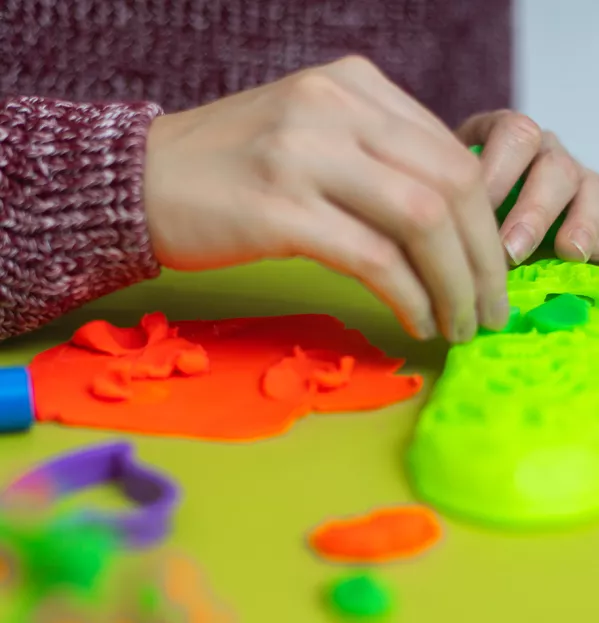- Home
- Teaching & Learning
- Primary
- Why workstations will transform your classroom
Why workstations will transform your classroom

Workstations can be powerful tools for developing independence and boosting children’s self-confidence in the classroom.
They are ideal for any child who is disengaged, who is working at levels significantly lower than their peers, or who is struggling to maintain attention during a lesson.
Pioneered by the special school sector, workstations are now seen more frequently in mainstream classrooms.
But what exactly is a workstation? And how do you make use of them effectively?
What is a workstation?
Simply put, a workstation is a designated table or space in the classroom where tasks are provided for children to complete.
Ideally, there should be two or three tasks, with the materials stored in ziplock bags or another container that is easy to store and tidy up.
The tasks go on the left of the table and, as the child completes them, they move them to the right, reinforcing the concept of successfully finishing and moving on.
If you have a classroom that is light on space and heavy on pupils, then the workstation tasks can be kept in a central box or bag, and used on each child’s table at “workstation time”.
If there are several children in a class who benefit from workstation activities, another option would be to designate a single table as the “workstation table”. Each child can be allocated a different coloured set of trays or a table covering, so the children know that when their equipment is on the table, it is their workstation time.
What do workstation tasks involve?
The exact nature of the tasks will vary depending on the age, stage and ability of the child. However, at our school, children generally have a maths task, a literacy task and a fine motor skills task.
These tasks should be carefully tailored to ensure they are not too hard for the learner and designed to support the child in overlearning a concept or skill. Many children who have additional needs struggle with working memory, so the daily repetition of a familiar task can help them embed this learning into their long-term memory.
Tasks should be pitched so that children can complete them with minimal adult support. As the week progresses, the child should become more and more confident in completing the workstation task independently.
It is useful for teachers to keep track of which tasks a child is completing - as it may be that they are avoiding less-preferred tasks - and whether they are accessing a task with support or on their own.
Workstation tasks do not need to be refreshed each week. You might introduce one new task each week, while the other two remain the same.
If you have a child who is particularly disengaged or dependent on adult support, then tasks could even be a little too easy for them, so that their achievement is more about completing a task on their own.
Workstations: what are the benefits?
When properly established, workstations can help your learners to develop their independent working skills.
For children who are disengaged, workstations can be an opportunity to provide them with tasks that are specifically designed to motivate them, or that are tailored around a special interest. This means they will hopefully look forward to completing them.
Workstations can also be used as part of a “now and next” strategy, where “next” is an additional motivator or reward that pupils can complete after their workstation tasks.
Read more:
- Why we let pupils sit wherever they like
- How playground ‘zones’ have transformed school break times
- 3 ways to support early language acquisition
Another benefit is that workstations can be used flexibly throughout the day to suit your classroom. It might be that a learner benefits from arriving in the morning and completing some familiar tasks, allowing them to start the day feeling successful. This might also work for the end of the day.
For other children, it might suit them to complete some workstation time during a teacher input, or after they’ve had a go at their main learning in a lesson.
Older children, for whom workstations are well-embedded and well-liked, might opt to use their workstation as a movement or learning break, selecting more independently when they use it during the day.
Many children who struggle with disengagement are also those who require the highest level of adult support in the classroom. Although setting up the tasks can initially seem like extra work, once you have the workstation established it will pay dividends by allowing staff to be redirected while the learner is completing their workstation time.
Most importantly, once the child is familiar with the workstation activities and can complete them independently, it will help them to feel secure in their learning, boost their self-esteem and enable them to be more confident in and around the classroom.
You need a Tes subscription to read this article
Subscribe now to read this article and get other subscriber-only content:
- Unlimited access to all Tes magazine content
- Exclusive subscriber-only stories
- Award-winning email newsletters
Already a subscriber? Log in
You need a subscription to read this article
Subscribe now to read this article and get other subscriber-only content, including:
- Unlimited access to all Tes magazine content
- Exclusive subscriber-only stories
- Award-winning email newsletters
topics in this article



